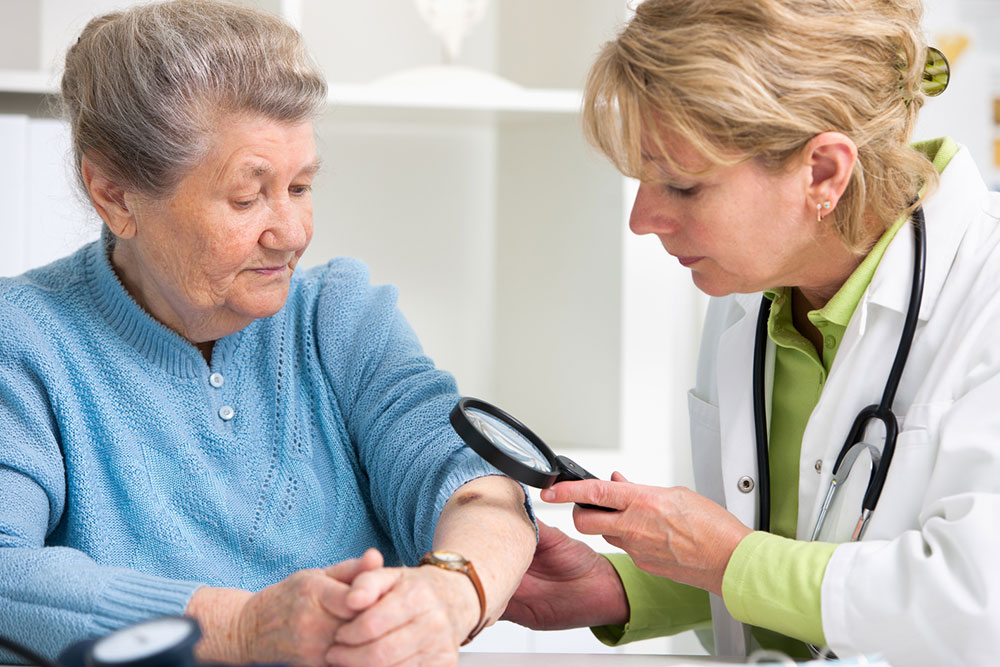14 silent warning signs of skin cancer

Skin cancer is one of the most common types of cancer, which has a profound impact on an individual’s life. While many are well-acquainted with the visible markers of the condition, such as moles and lesions, one also needs to be aware of the less apparent and often disregarded warning signs. These silent signals, when recognized and understood, might lead to early detection, timely intervention, and better management of skin cancer.
Persistent itching or pain
Persistent, unexplained itching or pain in a specific skin area can be a discreet indicator of underlying skin cancer. The itching or pain may persist over an extended period without an apparent cause. It could manifest before any visible changes on the skin’s surface, making it easy for people to ignore. The constant discomfort should be taken seriously and examined by an expert.
Changes in skin texture
Skin affected by cancer can undergo noticeable alterations in texture. It may become rough, scaly, or develop a warty appearance. These changes tend to occur gradually and may be accompanied by a sensation of dryness or thickness in the affected area. Patients should be attentive to shifts in skin texture, particularly in areas subject to prolonged sun exposure.
Irregular borders
Unlike benign moles that typically have well-defined and symmetrical borders, skin cancer lesions often exhibit irregular or jagged edges. This subtle deviation from the norm can be an early indicator of skin cancer. Patients should conduct regular self-checks to identify asymmetrical or unevenly bordered spots.
Changes in skin color
Skin cancer may trigger changes in skin pigmentation, causing some areas to become darker, lighter, or even multi-colored. These alterations may start subtly, making them easy to dismiss. Patients should diligently monitor unusual shifts in coloration, particularly within existing moles or freckles.
Non-healing sores or ulcers
Sores or ulcers caused by skin cancer may last longer than a month. These non-healing wounds can vary in size and may intermittently ooze or bleed. Patients should promptly monitor such sores or ulcers on the skin.
Enlargement or evolution of existing moles
A mole that has gradually increased in size or evolved in shape or coloration should not be overlooked. While mole changes are often considered a key warning sign of skin cancer, subtle alterations can be easy to miss. Patients should regularly monitor existing moles for subtle changes.
Unusual sensations
Skin cancer may cause unusual sensations like tingling, burning, or tenderness. These sensations can arise without an apparent cause or injury, making it essential to monitor them. Patients should be vigilant in noticing unusual sensations on the skin, especially in areas that are usually exposed to the sun.
Invisible lesions
Certain types of skin cancer, such as melanoma in situ, can develop below the skin’s surface, rendering them invisible to the naked eye. These lesions may not present any external signs but can still pose a risk. Patients should visit a dermatologist for regular skin examinations to detect subcutaneous lesions.
Changes in nail health
Skin cancer can also affect the nails, leading to changes like darkened lines, discoloration, or separation from the nail bed. These subtle signs may not initially raise concern. Patients should pay attention to unexpected changes in nail health, as they can provide valuable clues to underlying skin conditions.
In addition to the above, one should be aware of the following less-recognized, unexpected indicators of potential skin cancer:
Hair loss
Hair loss, an unexpected indicator of skin cancer, often occurs in a localized area without noticeable changes on the surface. It happens when the underlying cancerous cells disrupt the hair follicles. Since hair loss is not typically associated with skin cancer, it can perplex individuals. Those who experience this symptom should see a healthcare professional for further evaluation.
Unusual bleeding or discharge
Skin cancer, when present in specific areas like the nipple or genital region, can give rise to unexplained bleeding or discharge. This can be disconcerting because such occurrences are often associated with different health concerns. Individuals experiencing such symptoms must seek prompt attention to rule out potential malignancy.
Chronic inflammation or redness
Prolonged inflammation or redness in a specific skin area, especially without an apparent cause, can be a subtle yet significant sign of skin cancer. This redness or inflammation may initially be attributed to other factors, such as allergies. However, if it persists over an extended period, it should raise concern and prompt further evaluation by a healthcare professional. The sign should not be overlooked, as it can be a crucial indicator of an underlying malignancy.
Changes in mouth or lip appearance
While skin cancer is commonly associated with external areas of the body, it can also manifest on the lips or inside the mouth. For instance, one may notice unusual growths, discoloration, or shifts in texture within the oral cavity. These alterations may initially be dismissed or attributed to other causes, but they should not be ignored. Seeking prompt attention for such changes is imperative to ensure timely diagnosis and intervention.
Persistent fatigue or weakness
Skin cancer may sometimes have systemic effects on the body, leading to symptoms like persistent fatigue or weakness. These signs may not be immediately associated with skin cancer and could be attributed to other factors. However, in the context of skin cancer, they can be indicative of an underlying malignancy that requires attention. Individuals experiencing unexplained and prolonged fatigue or weakness should seek professional evaluation to assess potential skin cancer-related impact.
These less-recognized warning signs of skin cancer can be pivotal in early detection and intervention. While they may be subtle and easily overlooked, their presence should prompt individuals to seek the expertise of a healthcare professional for proper evaluation and diagnosis. Vigilance in recognizing these signs can significantly enhance the chances of timely intervention and successful treatment.

